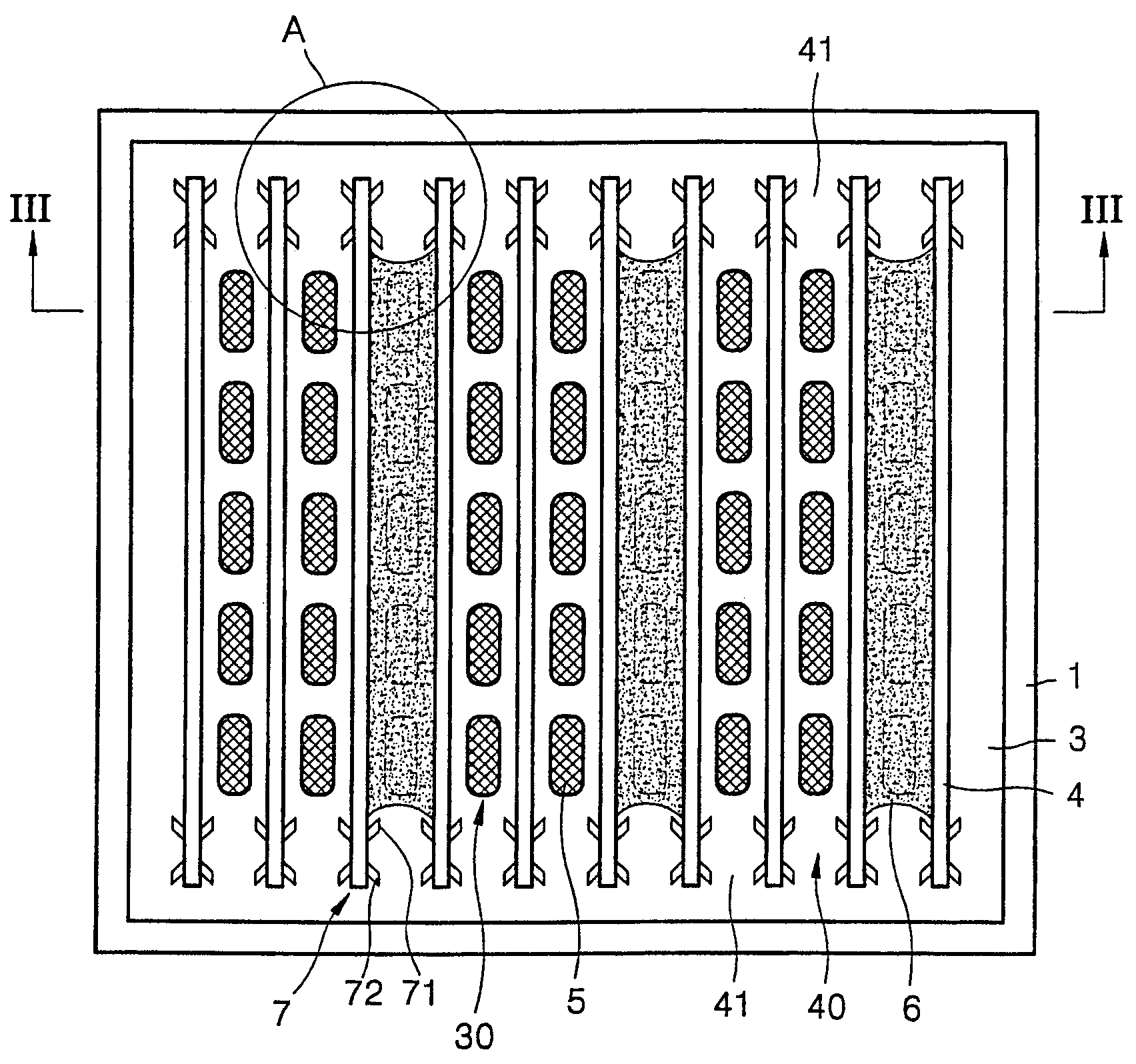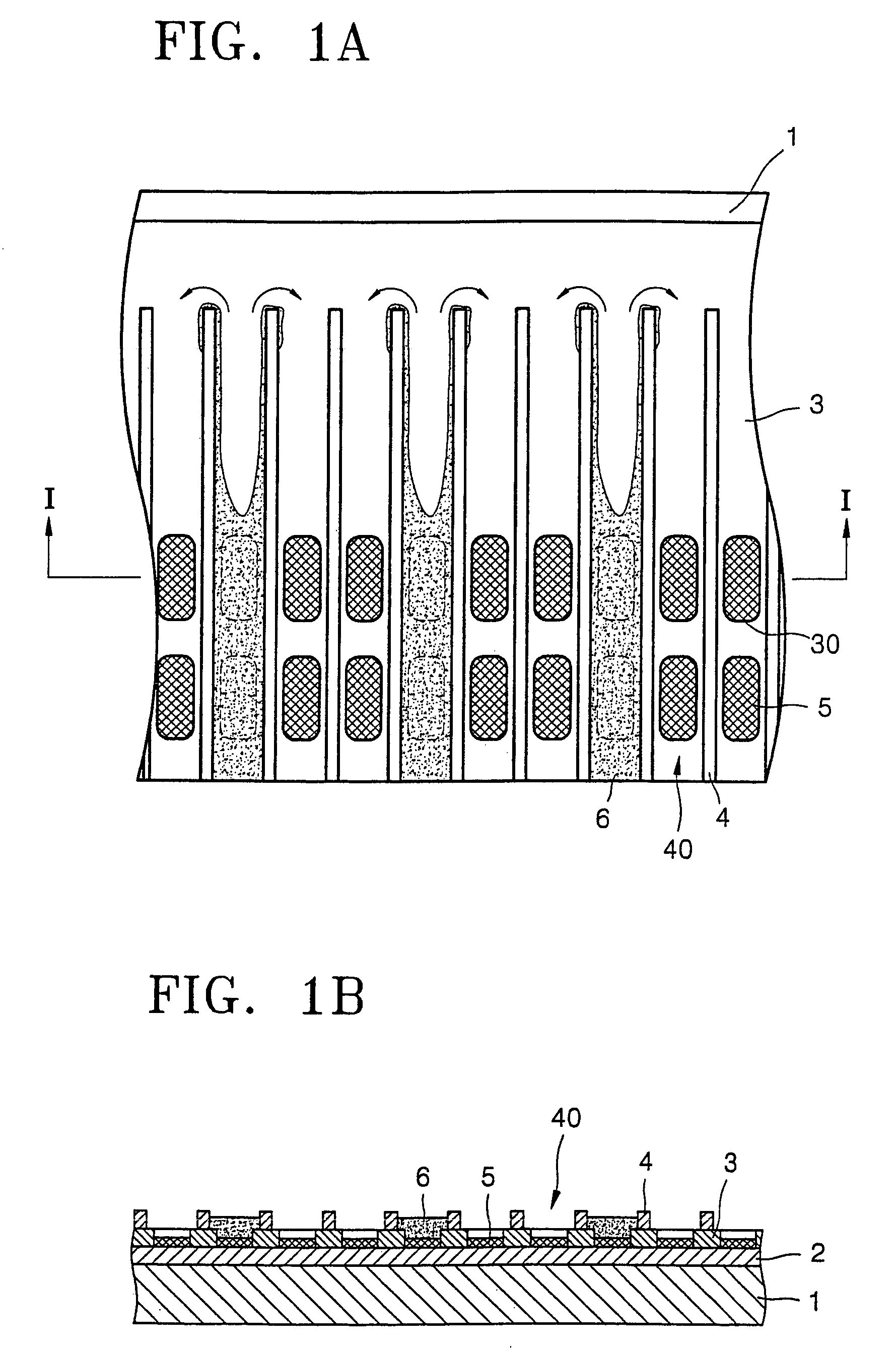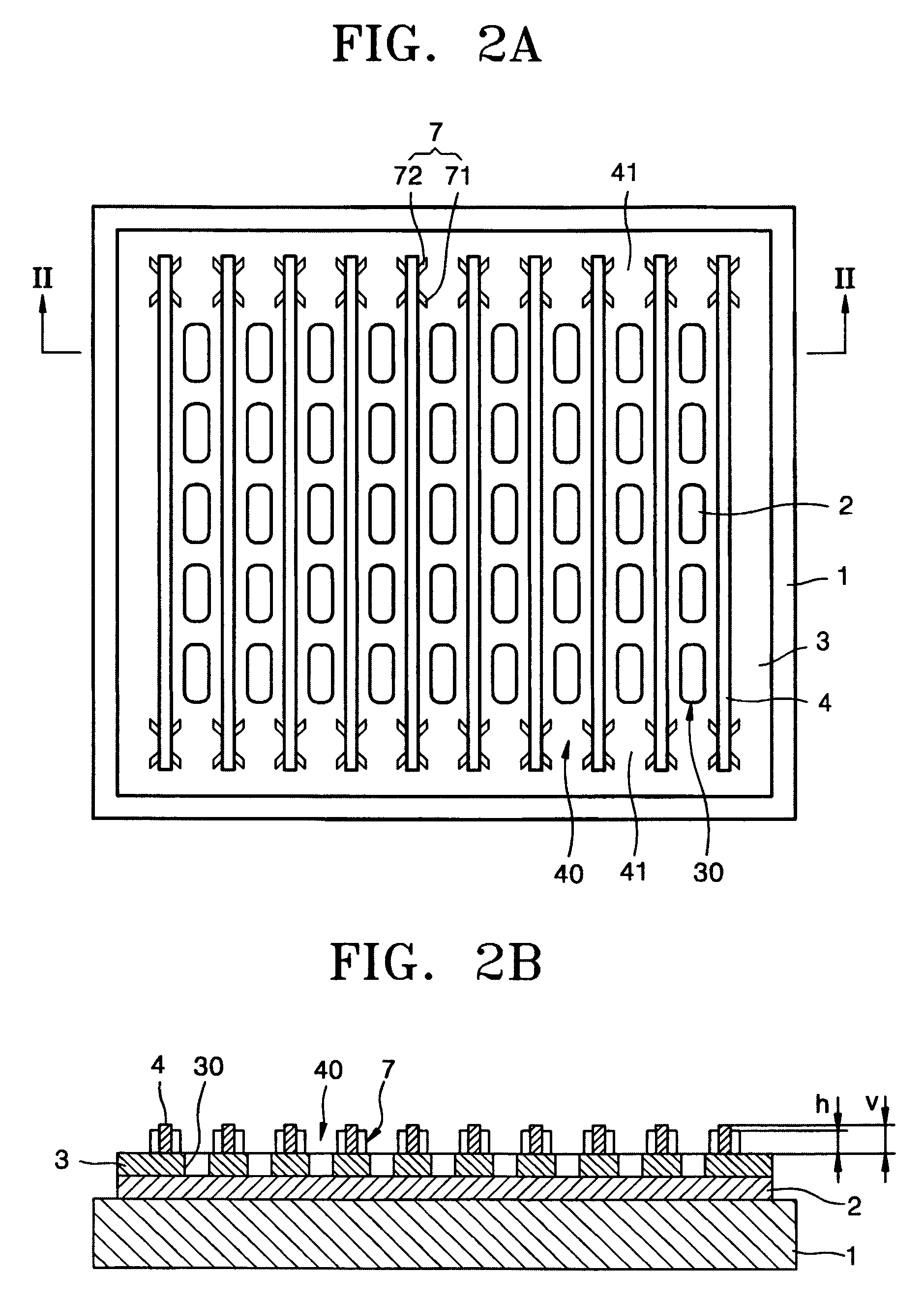Polymer organic light emitting diode
- Summary
- Abstract
- Description
- Claims
- Application Information
AI Technical Summary
Benefits of technology
Problems solved by technology
Method used
Image
Examples
Embodiment Construction
[0044]Preferred embodiments of the present invention will now be described in detail with reference to the accompanying drawings. An explanation will be given with the example of a passive matrix type polymer OLED. Although not shown in the drawings, the invention can also be applied to active matrix type polymer OLED. The structure of the substrate shown in the following drawings is substantially the same as that of the substrate shown in FIGS. 1A and 1B. The same elements are denoted by the same reference numerals.
[0045]FIGS. 1A and 1B are a plan view and a cross-sectional view taken along the line I—I of a passive matrix substrate for a polymer OLED, showing the state in which ink from a hole transport layer (HTL) or polymer emission layer is printed onto a passive matrix substrate to form a polymer OLED.
[0046]More specifically, FIGS. 1A and 1B show the state of a glass substrate 1 on which an organic polymer layer is formed in a polymer OLED. A first electrode layer 2 having a p...
PUM
 Login to View More
Login to View More Abstract
Description
Claims
Application Information
 Login to View More
Login to View More - R&D
- Intellectual Property
- Life Sciences
- Materials
- Tech Scout
- Unparalleled Data Quality
- Higher Quality Content
- 60% Fewer Hallucinations
Browse by: Latest US Patents, China's latest patents, Technical Efficacy Thesaurus, Application Domain, Technology Topic, Popular Technical Reports.
© 2025 PatSnap. All rights reserved.Legal|Privacy policy|Modern Slavery Act Transparency Statement|Sitemap|About US| Contact US: help@patsnap.com



